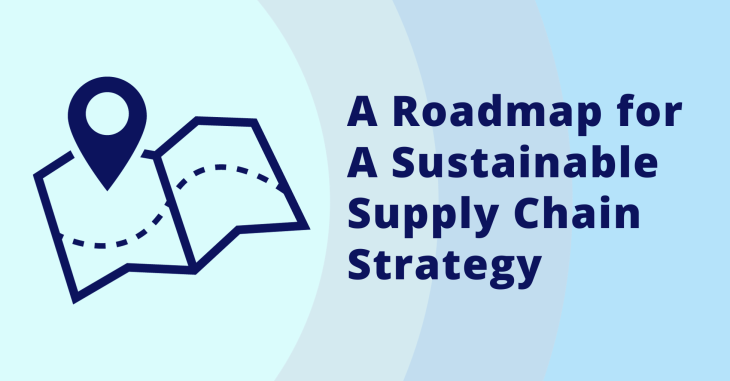A Roadmap for a Sustainable Supply Chain Strategy

Developing a sustainable supply chain is a crucial strategic initiative for organizations aiming to minimize their environmental impact, promote social responsibility, and ensure long-term business resilience. Here’s a step-by-step guide on how to develop a sustainable supply chain:
- Leadership and Commitment: Ensure strong leadership support and commitment to sustainability goals throughout the organization. Establish sustainability as a core value and a strategic priority.
- Assessment and Benchmarking: Conduct a comprehensive assessment of your current supply chain to identify areas of improvement. Benchmark your performance against industry standards and best practices.
- Stakeholder Engagement: Engage with key stakeholders, including suppliers, customers, employees, and the local community, to gather input and build partnerships for sustainable practices.
- Set Clear Sustainability Goals: Define specific, measurable, achievable, relevant, and time-bound (SMART) sustainability goals. These may include reducing greenhouse gas emissions, minimizing waste, or improving labor conditions.
- Supply Chain Mapping: Create a detailed map of your supply chain, including all suppliers and sub-suppliers. Understand the environmental and social impact of each link in the chain.
- Supplier Evaluation and Selection: Assess your suppliers based on their environmental and social practices. Consider integrating sustainability criteria into supplier selection and contract processes.
- Transparency and Traceability: Implement systems for tracking and tracing products and materials through the supply chain. This enhances transparency and allows for better accountability.
- Reduce Environmental Impact: Identify opportunities to reduce the environmental impact of your supply chain. This may involve energy efficiency improvements, waste reduction, and sustainable sourcing.
- Ethical Labor Practices: Promote fair labor practices within your supply chain. Ensure that workers’ rights are respected, and ethical labor standards are upheld.
- Collaboration and Partnerships: Collaborate with suppliers to jointly develop sustainable solutions. Encourage knowledge sharing and innovation for sustainability.
- Sustainable Packaging: Evaluate and improve your packaging materials to reduce waste and promote recyclability or biodegradability.
- Transportation and Logistics: Optimize transportation and logistics to minimize carbon emissions. Consider alternative transportation methods and route optimization.
- Sustainability Metrics and Reporting: Establish key performance indicators (KPIs) to measure progress towards sustainability goals. Regularly report on your sustainability efforts to stakeholders.
- Continuous Improvement: Sustainability is an ongoing process. Continuously review and update your supply chain practices, technologies, and strategies to improve sustainability performance.
- Regulatory Compliance: Stay informed about environmental and social regulations in your industry and regions of operation. Ensure full compliance and strive to exceed requirements.
- Risk Management: Identify and manage sustainability-related risks in your supply chain, such as climate-related disruptions or reputational risks associated with unethical suppliers.
- Innovation and Technology: Explore innovative technologies and solutions that can enhance sustainability in your supply chain, such as IoT for monitoring, blockchain for traceability, or renewable energy sources.
- Employee Training: Educate and train employees at all levels about sustainability practices and their roles in achieving sustainability goals.
- Recognition and Incentives: Recognize and reward suppliers and employees for their contributions to sustainability goals to encourage continuous improvement.
- Communication and Marketing: Communicate your sustainability efforts transparently to customers and stakeholders. Highlight your commitment to sustainability as a competitive advantage.
Developing a sustainable supply chain requires a holistic approach, collaboration with stakeholders, and a long-term commitment to environmental and social responsibility. As sustainability practices continue to evolve, staying proactive and adaptive is essential for creating a resilient and sustainable supply chain.


